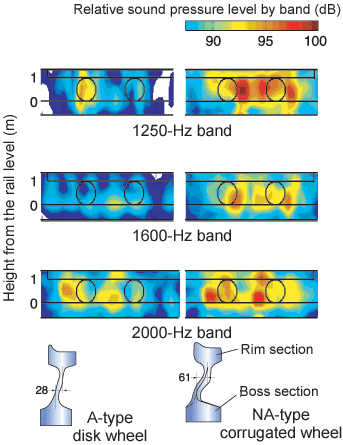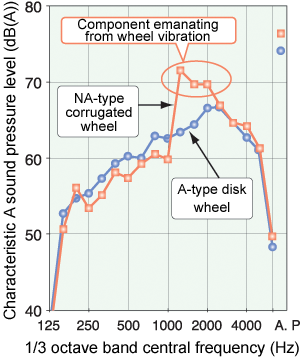| 6. Wheel Type and Rolling Noise on Conventional Lines | |||||
|
Out of consideration for wayside residents and passengers, a number of vehicle noise reduction measures have been taken on conventional lines in recent years. These have led to a reduction in noise from traction motors, which have generally been the main source of noise. As a result, though, rolling noise now represents a larger proportion of the total noise emitted. An accurate method for the investigation of noise sources was therefore proposed to devise countermeasures against such noise. This method involves the visualization of noise using a microphone array ellipsoidal sound collector (Fig.1). By this method, it was clarified that electric train rolling noise on conventional lines emanates mainly from the wheel section, and in particular the noise generated by the NA-type corrugated wheel is approximately 2dB louder than that generated by the A-type disk wheel. Measurement and analysis also showed that the frequency of the noise increase is in the 1.25-2 kHz band (Fig.2). This is attributed to the fact that the corrugated wheel has a thinner wheel plate than the disk wheel, and a larger offset from the root to the rim and boss due to its lower weight. As a result, the wheel tends to vibrate easily in response to vibration on the running wheel rim in the diameter direction (vertical direction). In the future, the possibility of a low-noise, low-vibration wheel will be studied.
|

